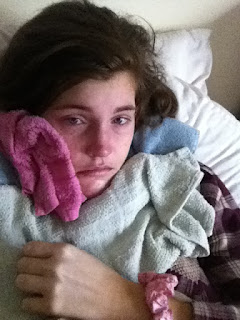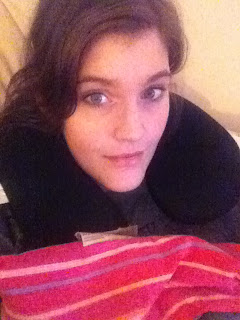CLEANING
Having
this hefty metal work surrounding your teeth means brushing and keeping your
mouth healthy and hygienic. First of all, do not try to chew gum, as this will inevitability
get stuck on the brackets and be a complete nightmare to remove. For instant
freshness, on the go, stick to mints and lemon sweets (in small doses due to
the high level of sugar). One of my top tips for improving breath is to ensure
you always brush your tongue daily. This alleviates a lot of the bacteria that
causes bad breath. When you have braces
you will have to brush your teeth more frequently and ideally you should be
brushing after every meal to remove plaque and build-up of food matter.
So
on with the cleaning. See below the list of products I used and found helpful
during my time with braces.
Toothpaste – Ideally something extra minty and
strong. I used Aquafresh Toothpaste Iso-Active Whitening gel. I like the way
the toothpaste foamed up and made me feel like my whole mouth was fresh in
between the teeth and brace work.
Brace brushes – Small pipe cleaner style brushes
found in most supermarkets and pharmacies. Boots sell a set that has different
size bristles. These can be very useful when you need to remove stains from
behind the wires or around the brackets.
Denture brushes – The smaller style denture brushes.
I found these useful to scrub around the brackets.
Manual toothbrush – I found this useful to have in a
toothbrush holder and carry in my bag for emergency cleaning. Mostly I used my
manual brush during the day when I was at work after lunch to clean my teeth
and to freshen up.
Electric toothbrush – I had an Oral-B Vitality White
& Clean rechargeable toothbrush which cost me around £20. I preferred the
smaller headed electric toothbrushes as it made it easier to brush around my
mouth with the limited space. It was also good for getting into the smaller
places, odd angles and behind the teeth.
Floss / water pik – Flossing it very important for
everyone. So it is of the up most importance for someone who can not completely
brush their teeth due to metal work. Your dentist will most likely tell you to
floss but from my experience this was nearly impossible. I invested in a water pik
in my final year of brace work and found this was quite beneficial. I have the
WaterPik Ultra Cordless Water Jet WP450.
I purchased mine from boots and it cost around £50. Please be aware that
these waterpik’s are quite strong so if you have sensitive gums or teeth this
may not be the best option for you.
Mouth wash – When I had my brace work I was
really conscious of bad breath, so would always opt for the strong and minty
mouthwashes like Listerine. However post braces I have tended to use more sensitive
mouthwashes such as; Sensodyne gentle mouth rinse. The most important point to
remember here is, do not use Corsodyl as your main mouthwash as this will
severely stain your teeth. When I had ulcers and sores I would use Corsodyl
before bed but rinse briefly (10-15 seconds) and afterwards brush over my teeth
with a manual toothbrush to avoid the stains.
Stain remover – Once a week I would use Eucryl a
powder stain remover. I would brush my teeth as usual but after I would brush
again using a manual brush and some stain remover. I found this kept my teeth
looking white and feeling extra clean.
I hope you
enjoyed reading this article and find the information useful whilst undertaking
orthodontic treatment. If you would like any more information on braces, jaw
surgery, orthognathic surgery or facial pain do not hesitate to drop me a
message on my Facebook page: Steffie’s Stuff or alternatively you add me on
twitter: www.twitter.com/jawandface I look forward to hearing from you.
Available now
To find out more click on the link below:
If you would like to be kept informed about the latest work I am undertaking and want to receive more content from the Jaw & Face charity project, you can subscribe for FREE on the link below.
You can now continue the chat and speak with other patients on my new closed Facebook group:
Looking forward to connecting with you soon!
Lots of love always,
Steffie
x.x.x






